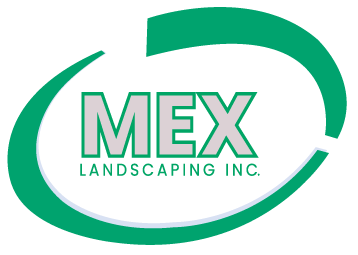When winter hits, one common problem many businesses face is ensuring safety during ice storms. A well-drafted commercial snow removal contract can mitigate the hazards associated with snow and ice, protecting your property and people. This article will guide readers through key components like defining service levels, establishing clear terms, and outlining safety protocols. By understanding these essential guidelines, businesses can avoid costly disputes and ensure reliable landscape maintenance in winter months. Readers will learn how to create effective contracts that safeguard their interests while addressing the challenges posed by winter weather.
Key Takeaways
- Clear expectations in snow removal contracts enhance communication between service providers and property owners
- Establishing specific service areas improves efficiency and safety during winter weather events
- Defining response times ensures timely snow removal and reduces risks associated with hazardous conditions
- Including detailed pricing and additional fees fosters transparency and helps clients budget effectively
- Incorporating communication protocols guarantees effective collaboration during snow removal operations
Understanding the Scope of Work in Snow Removal Contracts

Understanding the scope of work in snow removal contracts is essential for ensuring clear expectations between the service provider and the customer. Key considerations include identifying specific areas for service, determining snowfall triggers for action, specifying snow removal methods and equipment, and addressing additional services like de-icing. Each of these factors plays a significant role in crafting effective commercial snow removal agreements that meet customer needs.
Identifying Specific Areas for Service
Identifying specific areas for service in snow removal contracts is crucial for both the provider and the customer to set clear expectations. This includes defining zones that require attention during emergency winter storms, such as parking lots, access roads, and pedestrian walkways. By outlining these areas, contractors can allocate appropriate equipment, like snowplows and loaders, ensuring timely removal of snow and safe access for vehicles and pedestrians alike.
Determining Snowfall Triggers for Action
Determining snowfall triggers for action is a vital component in snow removal contracts, as it establishes when services should be initiated. Typically, businesses may specify a trigger such as two inches of snow accumulation for driveways and sidewalks, ensuring prompt response to minimize risks associated with unsafe conditions. Effective snow management relies on a clear understanding of these thresholds, allowing licensed contractors to deploy the necessary resources quickly and efficiently, thus enhancing overall risk management for commercial properties.
Specifying Snow Removal Methods and Equipment
Specifying snow removal methods and equipment in contracts is critical for managing risks associated with winter storms and ensuring a safe environment for all. The policy should detail the types of machinery used, such as snowplows and salt spreaders, and the techniques for efficient snow removal to minimize slip and fall hazards. Additionally, understanding how these choices impact the overall price of services can help clients gauge the value offered while ensuring compliance with safety standards during adverse weather conditions.
Addressing Additional Services Like De-Icing
Addressing additional services like de-icing in snow removal contracts is essential for maintaining safety and accessibility on commercial properties during winter months. Businesses should ensure that the contract clearly outlines the de-icing methods to be used, such as salt or calcium chloride, and specify how these services will be implemented in response to winter weather conditions. Furthermore, incorporating information about any additional fees for de-icing services allows property owners to budget effectively while ensuring optimal management of slippery surfaces.
| Service Component | Details |
|---|---|
| De-Icing Methods | Salt, calcium chloride, and sand |
| Implementation Triggers | After a specified snowfall or ice accumulation |
| Additional Fees | Defined fee structure based on service frequency |
| Safety Compliance | Compliance with local safety regulations |
Snow removal contracts spell out the work, but the true art lies in how it is executed. Understanding the service levels and expectations will reveal what separates good choices from the best.
Defining Service Levels and Expectations

Defining service levels and expectations is critical in commercial snow removal contracts. Establishing response times for snow events ensures prompt action is taken during inclement weather. Setting quality standards for snow clearance and outlining performance metrics help maintain accountability. Additionally, detailing seasonal variations in service requirements allows for tailored approaches that meet specific property needs throughout the winter months.
Establishing Response Times for Snow Events
Establishing response times for snow events in commercial snow removal contracts is vital for ensuring timely service delivery. Service providers should clearly define response timeframes following snowfall accumulation, data-driven benchmarks such as two inches or more, allowing businesses to anticipate when snow removal will occur. This level of clarity not only enhances customer satisfaction but also mitigates safety risks associated with hazardous conditions, providing property owners with the assurance that their premises will remain accessible and safe throughout winter storms.
Setting Quality Standards for Snow Clearance
Setting quality standards for snow clearance is essential for maintaining safety and accessibility on commercial properties. Snow removal contracts should clearly define the expected depth of snow removal, frequency of service, and the condition of surfaces once cleared. For example, a standard might stipulate that sidewalks should be cleared to bare pavement within two hours of a specified snowfall trigger, ensuring that businesses remain operational and safe.
| Quality Standard Component | Details |
|---|---|
| Snow Depth Removal | Clear snow accumulation of three inches or more |
| Timeframe for Clearance | Remove snow within two hours of accumulation |
| Surface Condition | Clear to bare pavement for pedestrian walkways |
| Performance Evaluation | Regular assessments of service effectiveness based on standards |
Outlining Performance Metrics and Monitoring
Outlining performance metrics and monitoring in commercial snow removal contracts is vital for ensuring accountability and measuring service effectiveness. By setting clear benchmarks, such as response times and snow clearance standards, property managers can track contractor performance and ensure that safety expectations are met during winter months. Regular assessments against these metrics not only facilitate improvement but also enhance trust between service providers and customers, ensuring that properties remain safe and accessible.
Detailing Seasonal Variations in Service Requirements
Detailing seasonal variations in service requirements within commercial snow removal contracts is essential for addressing the fluctuating nature of winter conditions. Service providers must assess each property’s unique landscape and usage patterns to customize snow removal strategies, ensuring that areas most heavily trafficked receive priority during intense snowfall. By adapting services based on seasonal needs, contractors can optimize their resource allocation and enhance safety, reassuring clients that their properties will remain accessible and secure throughout the winter months.
With service levels clearly defined, the next step is to establish concrete terms and conditions. These terms lay the groundwork for a successful partnership, ensuring both sides understand their responsibilities and expectations.
Setting Clear Terms and Conditions

Setting clear terms and conditions in commercial snow removal contracts is essential for establishing a mutual understanding between service providers and clients. This section will explore key components, including agreement duration and renewal options, termination clauses and notice periods, the roles and responsibilities of both parties, and procedures for contract amendments. These elements ensure that all parties are aligned and that expectations are clearly defined.
Agreement Duration and Renewal Options
Agreement duration and renewal options are critical components of commercial snow removal contracts, as they define the length of the engagement and how it can be extended. It is advisable for businesses to establish a clear term, typically ranging from one season to multiple years, while including renewal clauses to facilitate seamless continuation of services. This clarity prevents misunderstandings and reassures clients of consistent snow management during challenging winter conditions.
| Contract Component | Details |
|---|---|
| Contract Duration | Typically one to three years |
| Renewal Terms | Automatic renewal options specified |
| Termination Notice | Written notice required 30 days in advance |
| Service Continuity | Ensures uninterrupted service during winter |
Termination Clauses and Notice Periods
Termination clauses and notice periods in commercial snow removal contracts are vital to protect both the service provider and the client. These clauses outline the conditions under which either party can terminate the agreement, as well as the required notice timeframe, typically set at 30 days. For property owners, having a clear termination process helps to ensure they can promptly reassess their snow removal needs in response to performance issues or changing circumstances without facing unexpected disruptions in service.
Roles and Responsibilities of Both Parties
Clearly defining the roles and responsibilities of both parties in a commercial snow removal contract is essential for effective collaboration and service delivery. Property owners must understand their obligation to communicate specific needs, such as priority areas for snow removal, while snow removal contractors are responsible for executing timely and safe services based on those requirements. By establishing these expectations in writing, both parties can work towards a common goal of maintaining accessible and safe properties during winter months:
| Party | Responsibilities |
|---|---|
| Property Owner | Provide clear specifications and communicate needs for snow removal. |
| Service Provider | Deliver timely snow removal services and address communicated needs. |
Procedures for Contract Amendments
Procedures for contract amendments in commercial snow removal agreements play a crucial role in maintaining flexibility and responsiveness to changing needs. Both parties should agree on a clear process that specifies how amendments can be proposed, reviewed, and executed, ensuring alignment with seasonal requirements or service enhancements. For instance, notifying the other party in writing 15 days prior to the desired amendment can streamline adjustments, thereby promoting effective collaboration and minimizing disruptions during critical winter months.
The foundation is set with clear terms. Next, it is crucial to address liability and insurance, safeguarding interests and ensuring peace of mind.
Including Liability and Insurance Provisions

Including liability and insurance provisions in commercial snow removal contracts is crucial for establishing clear responsibilities and protections for both parties. This section will cover defining indemnification clauses, specifying required insurance coverage, and allocating risk and liability effectively. Additionally, it will address property damage and third-party claims, ensuring that all aspects of liability are adequately managed to prevent disputes.
Defining Indemnification Clauses
Defining indemnification clauses in commercial snow removal contracts is essential for risk management and liability protection. These clauses outline the responsibilities of both parties if claims arise due to negligence, ensuring that the service provider commits to covering damages incurred as a result of their operations. Clear indemnification terms create transparency and protect property owners from potential liabilities, fostering trust in the contractual relationship:
- Understanding the role of indemnification clauses.
- Outlining responsibilities for claims arising from negligence.
- Ensuring protection for property owners against liabilities.
Specifying Required Insurance Coverage
Specifying required insurance coverage in commercial snow removal contracts ensures that both the service provider and the property owner are adequately protected from potential risks. It is essential for contracts to clearly outline the types of insurance, such as general liability and workers’ compensation, that service providers must maintain. This not only safeguards against claims related to property damage or accidents but also minimizes financial exposure, giving both parties peace of mind during winter operations.
Allocating Risk and Liability Between Parties
Allocating risk and liability between parties in commercial snow removal contracts is vital for establishing clear expectations and responsibilities. Service providers should define their liability limits in relation to accidents or property damage that may occur during operations, while clients must acknowledge their obligation to report any issues promptly. By clearly outlining these terms, both parties can mitigate potential disputes, ensuring effective snow removal and enhanced safety throughout the winter season:
- Clearly define liability limits for the service provider.
- Establish prompt reporting responsibilities for clients.
- Outline procedures for addressing disputes to promote collaboration.
Addressing Property Damage and Third-Party Claims
Addressing property damage and third-party claims in commercial snow removal contracts is crucial for safeguarding both the service provider and the property owner. It is important for the contract to clearly outline the procedures for handling potential damages that may occur during snow removal operations, ensuring that all parties understand their responsibilities. By establishing a framework for addressing claims and providing clear communication protocols, property owners can feel secure about their investment in snow management services while minimizing risks associated with unforeseen incidents.
Once the risks are covered, the focus shifts to money. Understanding pricing and payment terms completes the picture, ensuring clarity in every transaction.
Establishing Pricing and Payment Terms

Establishing pricing and payment terms is a critical aspect of drafting effective commercial snow removal contracts. This section will cover choosing the right pricing model to fit various service needs, invoicing procedures and payment schedules to ensure timely payments, as well as handling late payments and penalties. Additionally, it will address any extra fees that may arise for additional services, providing clarity and transparency for both parties.
Choosing the Right Pricing Model
Choosing the right pricing model in commercial snow removal contracts is fundamental for ensuring both fairness and predictability in budgeting. Common pricing structures include flat rates, hourly rates, or per-event charges, each suited to different client needs and property sizes. For instance, flat-rate agreements provide clients with a clear understanding of their expenses throughout the winter season, which helps in financial planning and eliminates surprises when snowfall occurs.
Invoicing Procedures and Payment Schedules
Invoicing procedures and payment schedules are critical elements of commercial snow removal contracts, ensuring that both parties understand their financial obligations clearly. Service providers should establish a straightforward invoicing process that aligns with the agreed-upon payment schedule, which may be monthly or per snow event, facilitating timely payments and maintaining cash flow. By outlining these details in the contract, businesses can avoid confusion and disputes, allowing property owners to budget effectively for winter services while ensuring that contractors receive prompt compensation for their work.
Handling Late Payments and Penalties
Handling late payments and penalties in commercial snow removal contracts is essential for maintaining a fair and professional relationship between service providers and clients. Clear stipulations regarding payment deadlines and associated penalties for late payments help manage expectations and ensure timely compensation for snow removal services. For example, a contract might specify a 10% penalty fee for payments received more than 15 days past due, thereby encouraging prompt payment and protecting the financial interests of the service provider:
- Define clear payment deadlines.
- Specify penalty fees for late payments.
- Establish communication protocols for overdue notices.
Additional Fees for Extra Services
Additional fees for extra services in commercial snow removal contracts should be clearly defined to prevent misunderstandings. Property owners may request supplementary services such as de-icing, sidewalk clearing, or additional snow hauling, and including these potential costs in the agreement allows for better budgeting and financial planning. By detailing these fees and the conditions under which they apply, service providers can ensure transparency and maintain a positive relationship with their clients.
| Service Component | Details |
|---|---|
| De-Icing | Fees based on salt or calcium chloride application. |
| Sidewalk Clearing | Charges for additional clearance beyond standard paths. |
| Extra Snow Hauling | Cost per trip for hauling snow off-site. |
Clear pricing sets the stage, but communication paves the way for success. Understanding how to handle emergencies is just as vital; it ensures that everything runs smoothly when the unexpected arises.
Incorporating Communication Protocols and Emergency Procedures

Incorporating communication protocols and emergency procedures in commercial snow removal contracts is essential for ensuring timely and effective service. This section will address key topics, including the importance of providing 24/7 contact information, planning for severe weather events, establishing reporting requirements and documentation, and utilizing effective communication channels. Each of these elements plays a critical role in facilitating seamless collaboration and prompt response during winter storms.
Providing 24/7 Contact Information
Providing 24/7 contact information in commercial snow removal contracts is a necessary step for ensuring effective communication between service providers and property owners. This accessibility allows clients to report urgent needs or severe weather changes without delay, which is essential for maintaining safety and operational efficiency during winter storms. By establishing direct lines of communication at all times, contractors can respond promptly to service requests or emergencies, thus enhancing customer satisfaction and trust in the snow removal process.
Planning for Severe Weather Events
Planning for severe weather events is a crucial element in the formulation of commercial snow removal contracts. Service providers should incorporate specific trigger points for initiating snow removal operations and establish clear protocols for communication during extreme conditions. By outlining these strategies, both property managers and snow removal teams can ensure prompt responses that mitigate safety risks and maintain accessibility, thereby enhancing the effectiveness of snow management services during winter storms.
Reporting Requirements and Documentation
Reporting requirements and documentation in commercial snow removal contracts are vital for ensuring accountability and establishing clear communication between service providers and property owners. Each party should agree on the types of reports that will be provided, such as service completion logs, weather conditions, and any incidents during snow removal operations. Implementing a standardized documentation process not only enhances transparency but also supports effective decision-making when evaluating service quality and safety compliance:
- Establish clear reporting templates for service documentation.
- Define specific weather-related data to be recorded.
- Outline incident reporting procedures for accidents or damages.
Utilizing Effective Communication Channels
Utilizing effective communication channels is vital in maintaining a responsive and efficient approach to snow removal operations. Service providers should establish clear lines of communication with property owners, using tools such as phone calls, emails, and text messages to provide timely updates and alerts. This direct access allows for quick resolutions to issues and ensures both parties remain informed during winter weather events, ultimately leading to safer and more accessible properties.
| Communication Channel | Purpose |
|---|---|
| Phone Calls | Immediate communication for urgent updates or requests. |
| Documentation of service confirmations and reports. | |
| Text Messages | Quick alerts regarding weather conditions or service status. |
Conclusion
Drafting effective commercial snow removal contracts is crucial for establishing clear expectations between service providers and clients. Key guidelines, such as defining specific service areas, setting quality standards, and including liability provisions, ensure safety and accountability during winter months. By incorporating well-structured pricing models and communication protocols, both parties can foster a collaborative relationship that enhances overall service delivery. Ultimately, these contracts play a vital role in maintaining accessible and safe commercial properties throughout challenging weather conditions, underscoring the importance of thoughtful planning in snow management.







